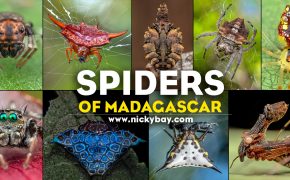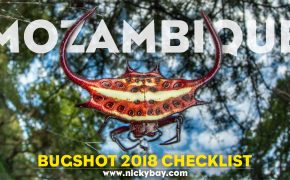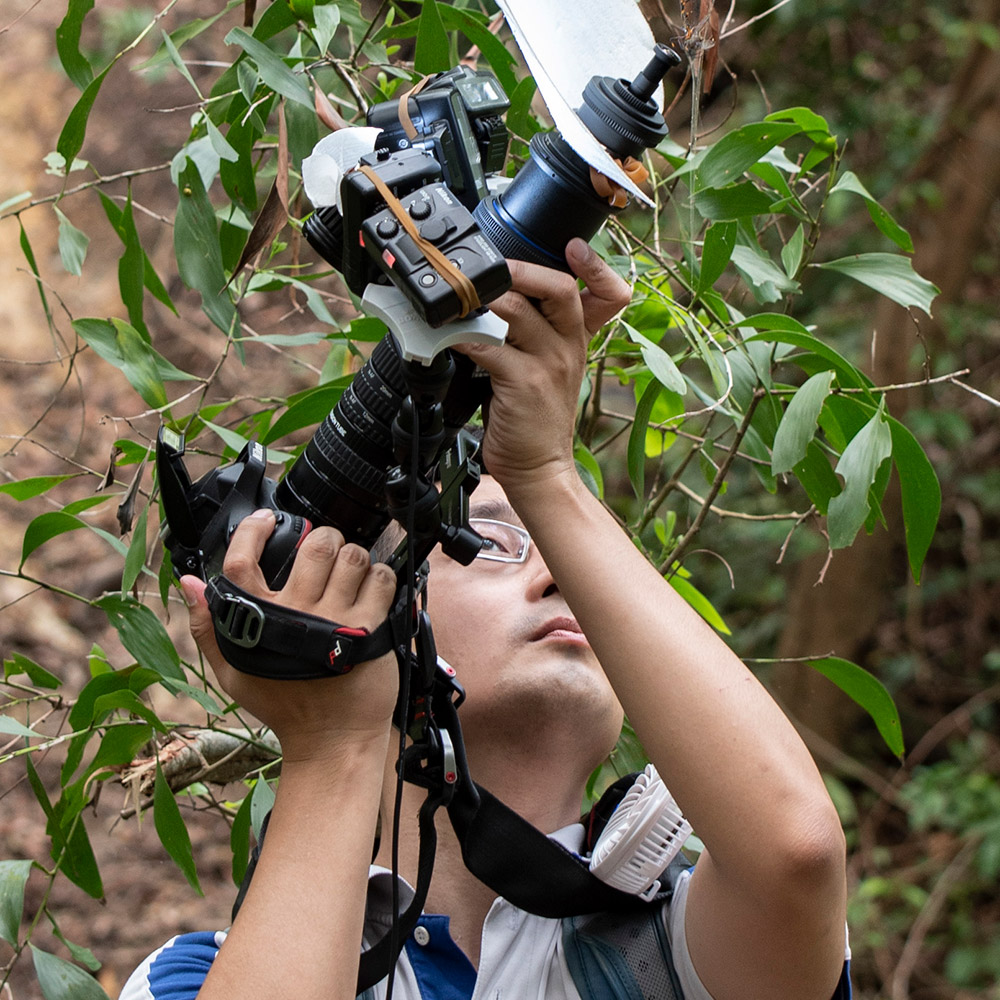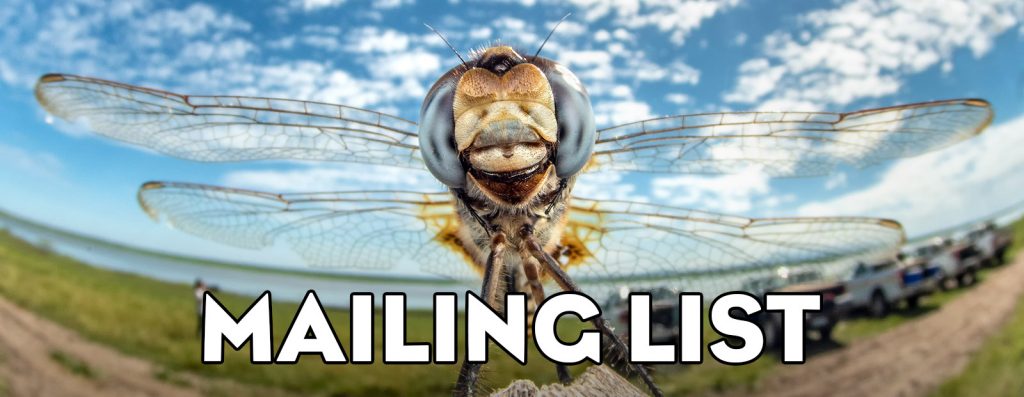A Viper Near You.. and Sexual Dichromatism
Many urbanites have not been exposed to nature for so long that when they saw me post photos of snakes shot in our local parks, they’d go “Singapore got snakes meh?”. Most of our local nature parks and cycling trails are home to numerous species of snakes. Many of us don’t see them because most would avoid proximity to humans by instinct.
The Pit Viper however, does not normally slither away when human presence is detected. As an ambush predator, it waits motionlessly and patiently for unsuspecting prey to approach and would not retreat as easily as other snakes.
Some of my earlier sightings of Pit Vipers were blogged here:
- Wagler’s Pit Viper spotted! (2010 November)
- A Congregation of Tiger Beetles (2011 April)
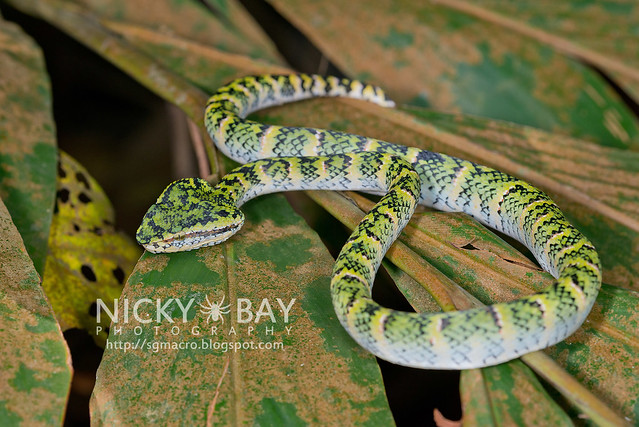 #1 Large adult Wagler’s Pit Viper (Tropidolaemus wagleri) just at the side of the path, but overlooked by hikers and cyclists.
#1 Large adult Wagler’s Pit Viper (Tropidolaemus wagleri) just at the side of the path, but overlooked by hikers and cyclists.
 #2 The juvenile is bright green while the adult has black/yellow/green stripes
#2 The juvenile is bright green while the adult has black/yellow/green stripes
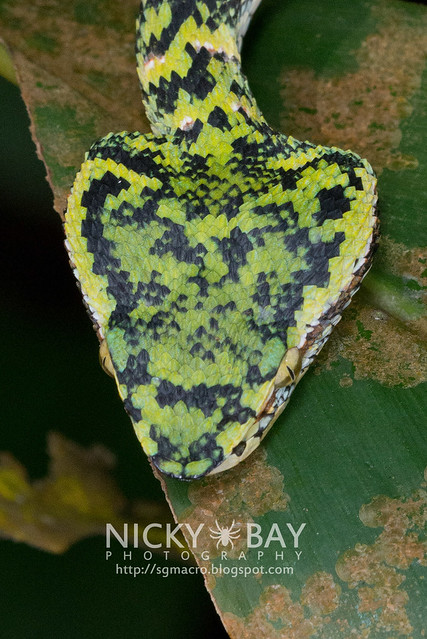 #3 The broad triangular shaped head is a strong tell-tale characteristic that it is a viper
#3 The broad triangular shaped head is a strong tell-tale characteristic that it is a viper
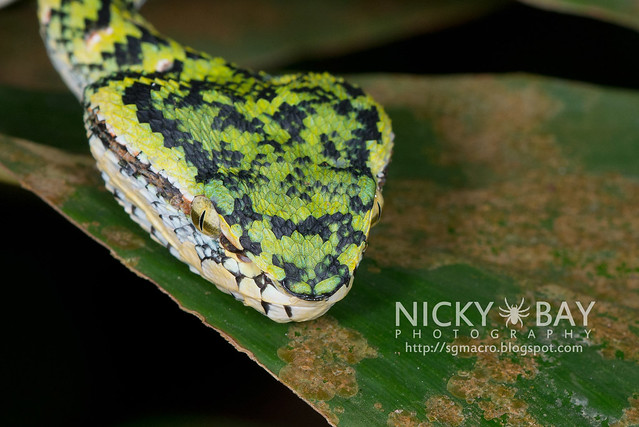 #4 I was using a 200mm for this shot. Wouldn’t have tried to go closer.
#4 I was using a 200mm for this shot. Wouldn’t have tried to go closer.
 #5 Flapping it’s tongue at us. A snake does not stick it’s tongue out for fun. The tongue serves to collect information around it. With the tongue flapping going on, particles latch or dissolve onto the tongue’s moisture, and is subsequently retracted and inserted into 2 sensory organs (Jacobson’s Organ) located at the roof of the mouth to be “analyzed”. I suppose that’s one of the reasons why a snake’s tongue is forked. 😛
#5 Flapping it’s tongue at us. A snake does not stick it’s tongue out for fun. The tongue serves to collect information around it. With the tongue flapping going on, particles latch or dissolve onto the tongue’s moisture, and is subsequently retracted and inserted into 2 sensory organs (Jacobson’s Organ) located at the roof of the mouth to be “analyzed”. I suppose that’s one of the reasons why a snake’s tongue is forked. 😛
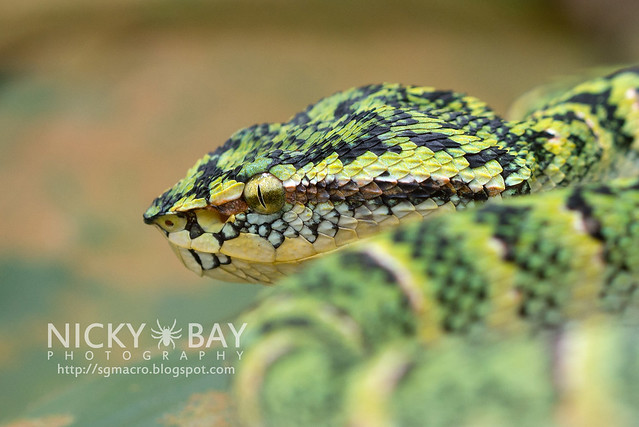 #6 These are called “Pit Vipers” because of the deep pit between the eye and the nostril. These pits are highly sensitive to heat and helps them to strike their prey with deadly accuracy even in complete darkness.
#6 These are called “Pit Vipers” because of the deep pit between the eye and the nostril. These pits are highly sensitive to heat and helps them to strike their prey with deadly accuracy even in complete darkness.
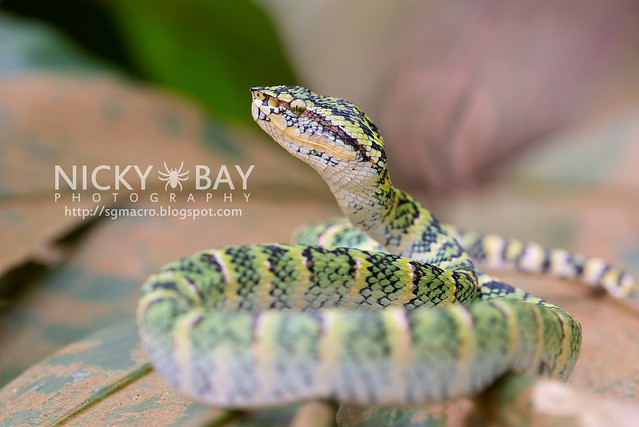 #7 Curiously staring at us
#7 Curiously staring at us
 #8 Despite our irritating presence, it did not attempt to move away at all
#8 Despite our irritating presence, it did not attempt to move away at all
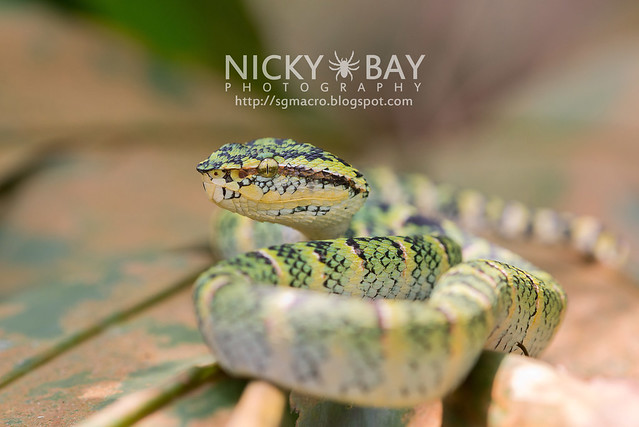 #9 Just stayed curled up and moving it’s head so very slowly
#9 Just stayed curled up and moving it’s head so very slowly
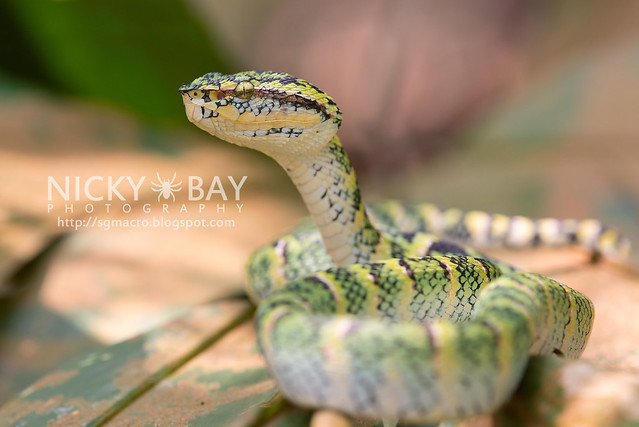 #10 These snakes are nocturnal, which could explain the relative sluggishness too
#10 These snakes are nocturnal, which could explain the relative sluggishness too
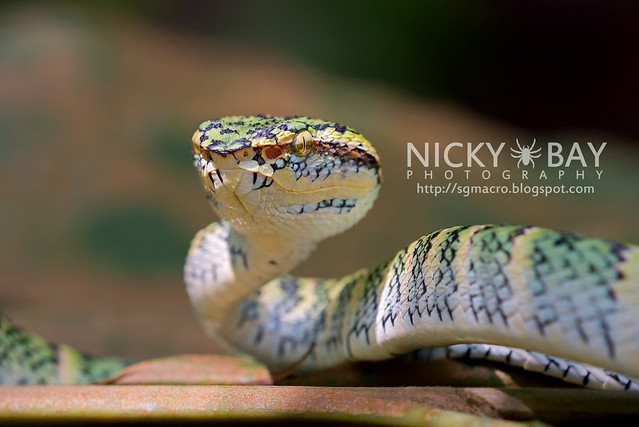 #11 Staring into the heat-sensing pits
#11 Staring into the heat-sensing pits
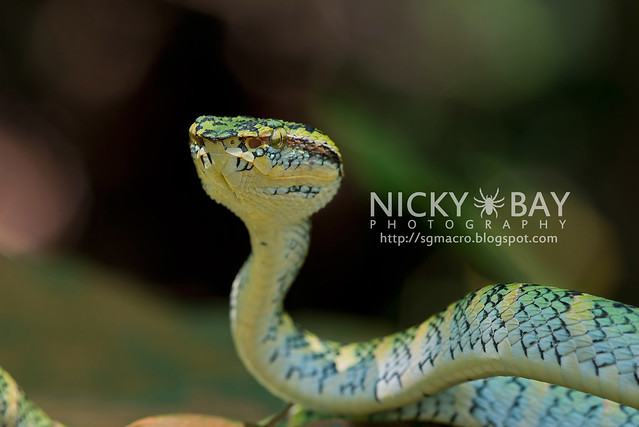 #12 Final shot. The heat-sensing pits are so big that others often mistake them to be the nostrils!
#12 Final shot. The heat-sensing pits are so big that others often mistake them to be the nostrils!
Some other notable subjects for the morning include a pair of sexually dichromatic Huntsman Spiders, water boatmen and a fulgorid planthopper.
Sexual Dichromatism refers to the difference in colour between a male and female animal. The following photos show a pair of Huntsman Spiders with an obvious difference in colouration trying to mate.
 #13 A pair of Huntsman Spiders (Sparassidae), probably trying to mate
#13 A pair of Huntsman Spiders (Sparassidae), probably trying to mate
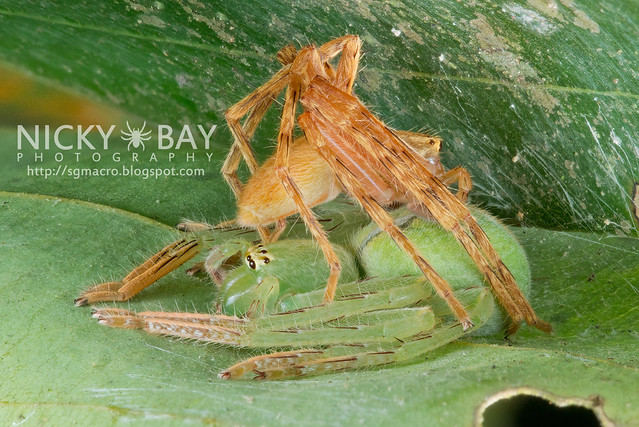 #14 Flipped the photo around for a better view. 🙂
#14 Flipped the photo around for a better view. 🙂
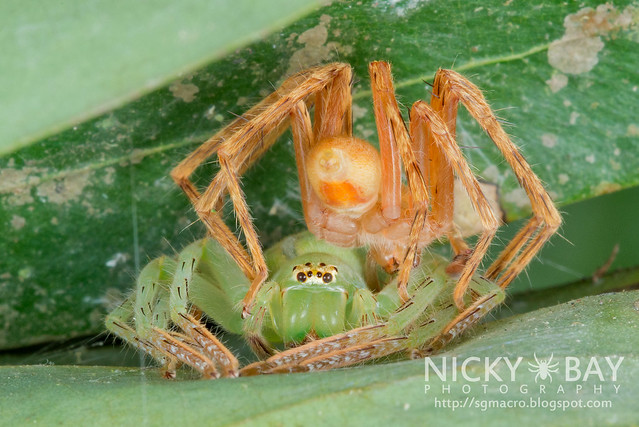 #15 View of the female’s face
#15 View of the female’s face
 #16 The mating didn’t seem too successful yet
#16 The mating didn’t seem too successful yet
 #17 A wider view shows that they were trying to make out in between two leaves
#17 A wider view shows that they were trying to make out in between two leaves
 #18 Both fell to the ground but that did not stop them from attempting their love ritual
#18 Both fell to the ground but that did not stop them from attempting their love ritual
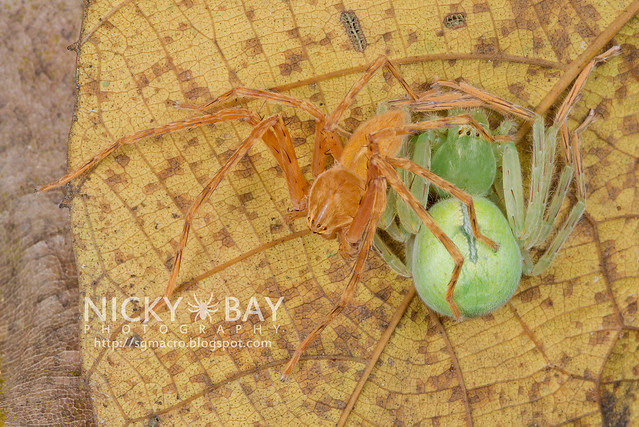 #19 The pair were exhibiting sexually dichromatic colours – green female, orange male.
#19 The pair were exhibiting sexually dichromatic colours – green female, orange male.
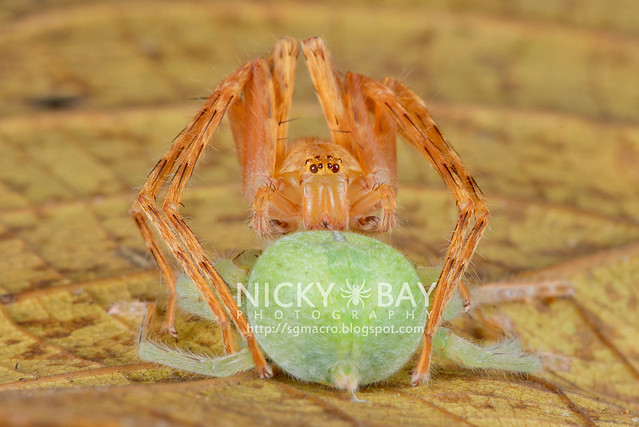 #20 Face to Face with the male
#20 Face to Face with the male
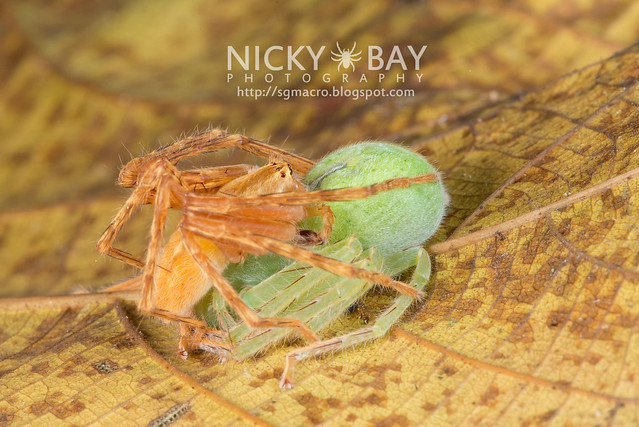 #21 He doesn’t give up!
#21 He doesn’t give up!
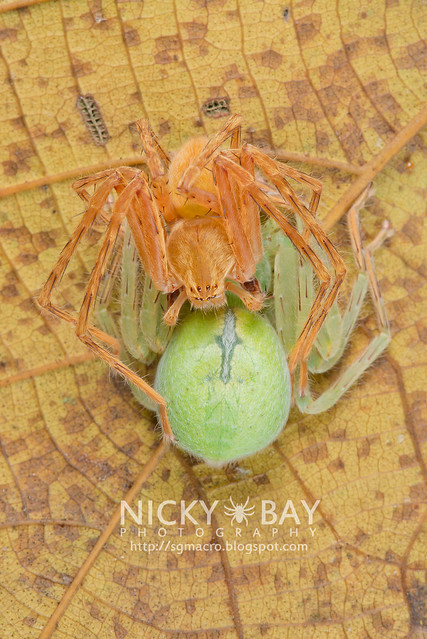 #22 The abdomen of the female is typically larger than that of the male
#22 The abdomen of the female is typically larger than that of the male
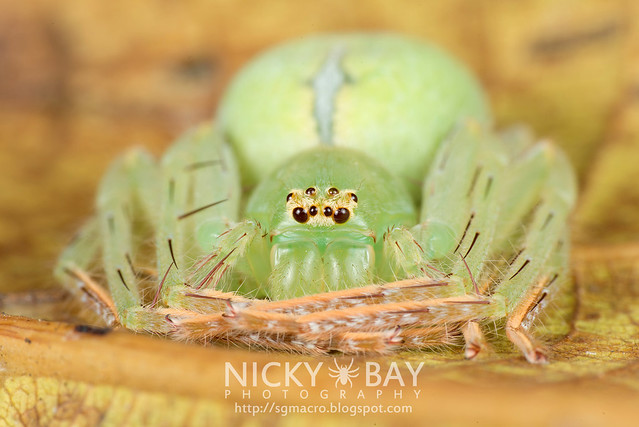 #23 Not too successful, the male went off to hunt for food…
#23 Not too successful, the male went off to hunt for food…
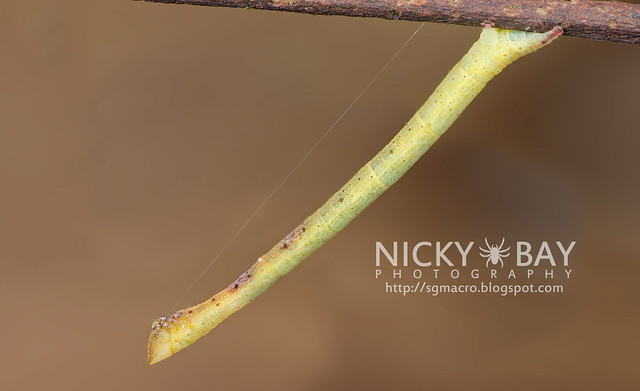 #24 Odd looking caterpillar, walked like a leech!
#24 Odd looking caterpillar, walked like a leech!
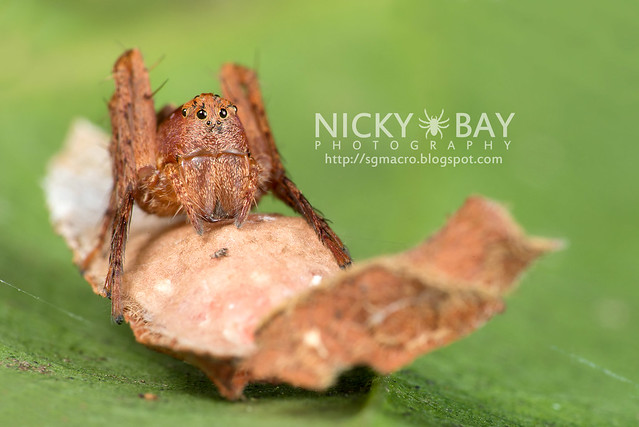 #25 Tiny little Lynx Spider (Oxyopidae) guarding her egg-sac
#25 Tiny little Lynx Spider (Oxyopidae) guarding her egg-sac
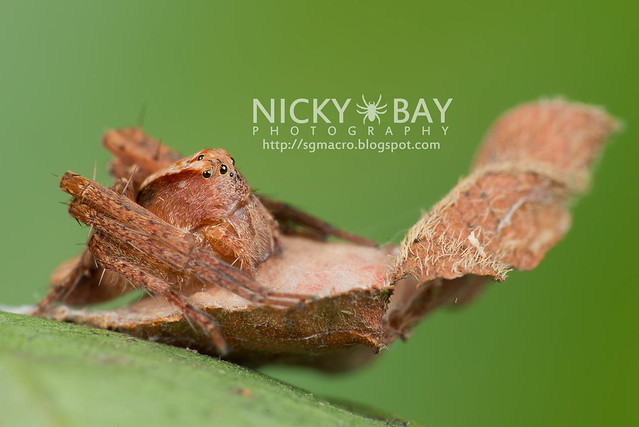 #26 These spiders would not retreat easily when they are with their eggs.
#26 These spiders would not retreat easily when they are with their eggs.
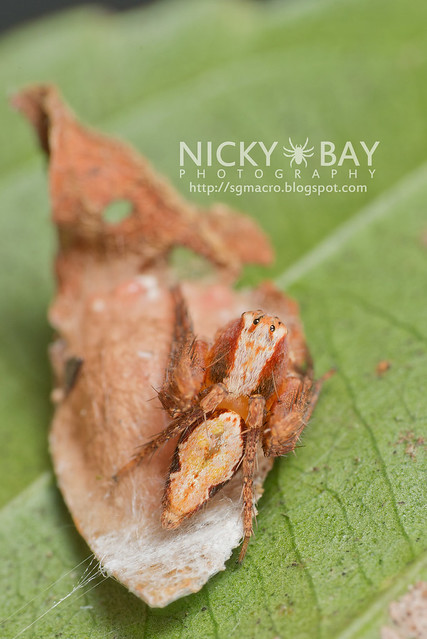 #27 Top view of the mother
#27 Top view of the mother
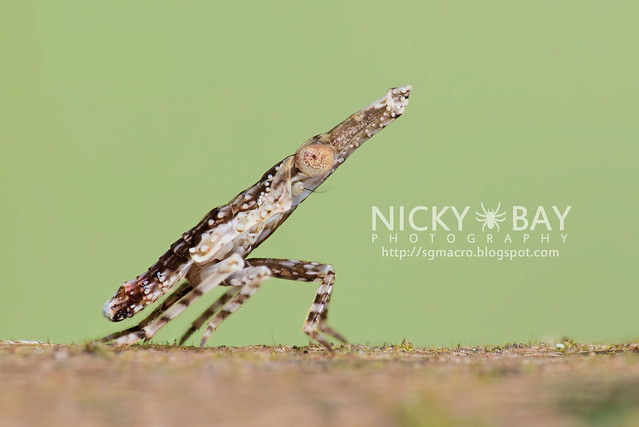 #28 Fulgorid Planthopper nymph?
#28 Fulgorid Planthopper nymph?
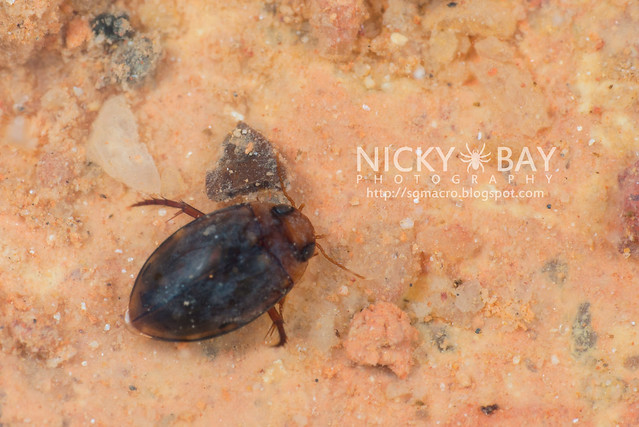 #29 The rain brought about some little ponds of water, and inside we found some water beetles!
#29 The rain brought about some little ponds of water, and inside we found some water beetles!
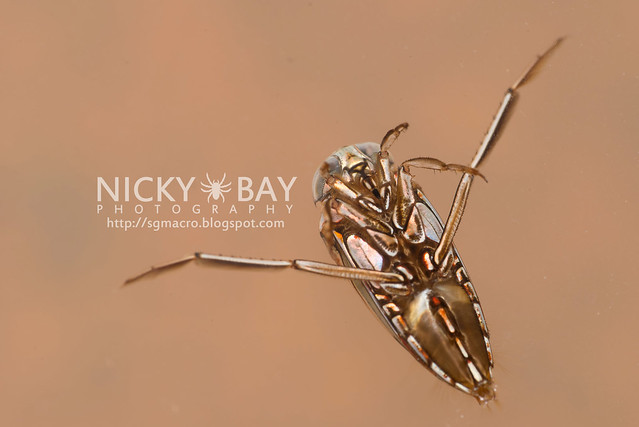 #30 While on the water surface, there were some Water Boatmen (Notonectidae)
#30 While on the water surface, there were some Water Boatmen (Notonectidae)
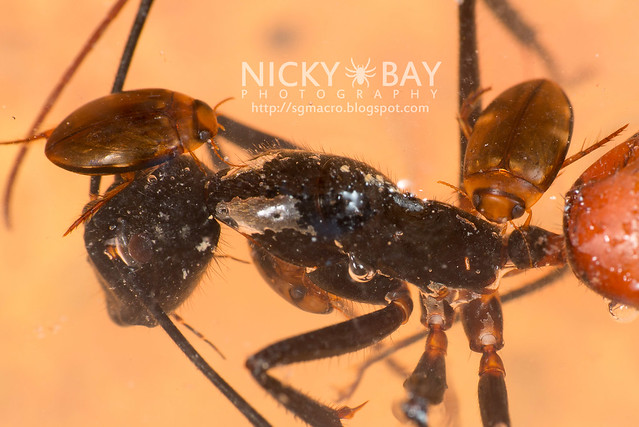 #31 A forest ant had drowned, and many water beetles surrounded it
#31 A forest ant had drowned, and many water beetles surrounded it
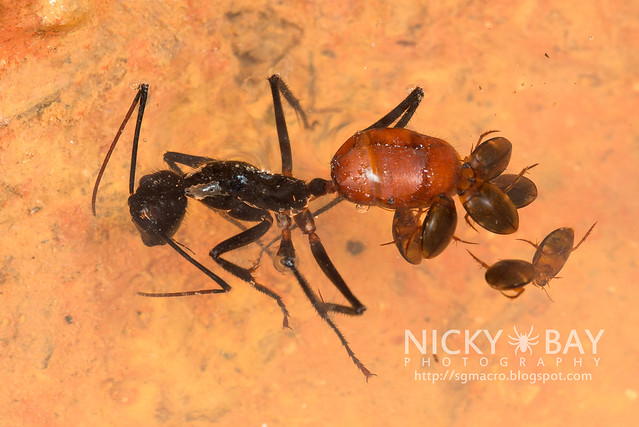 #32 All going for the abdomen!!
#32 All going for the abdomen!!
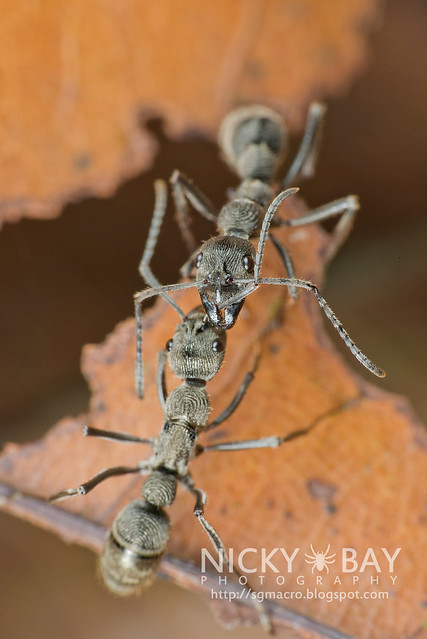 #33 Two ants communicating with each other?
#33 Two ants communicating with each other?
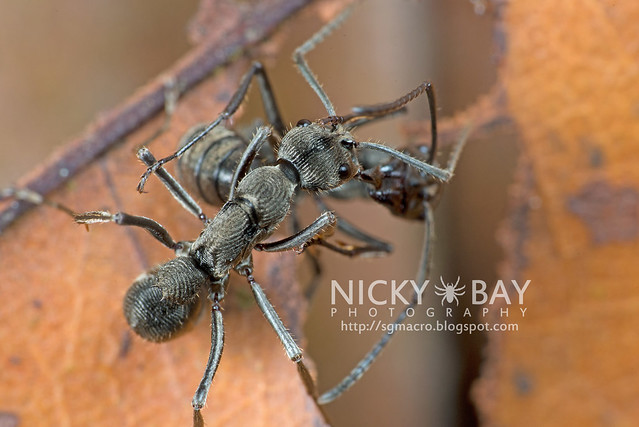 #34 Or were they fighting?
#34 Or were they fighting?
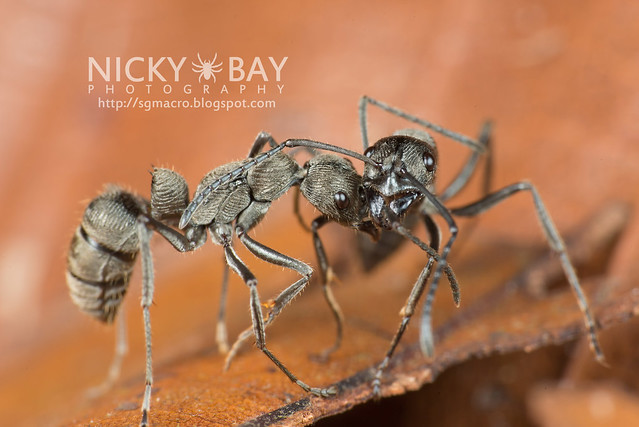 #35 This went on for quite a while.
#35 This went on for quite a while.
The full album can be viewed here.

